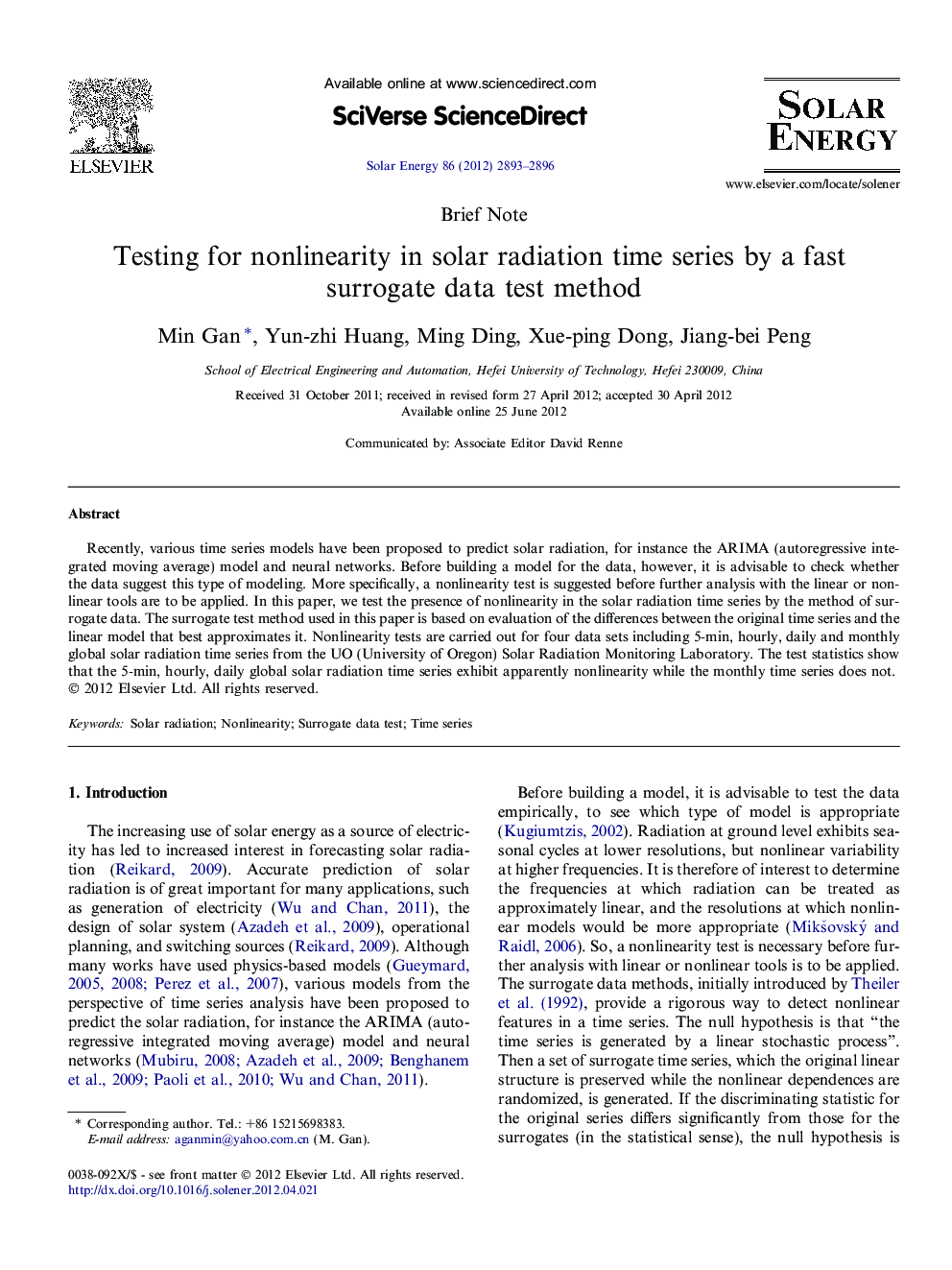| Article ID | Journal | Published Year | Pages | File Type |
|---|---|---|---|---|
| 1550939 | Solar Energy | 2012 | 4 Pages |
Recently, various time series models have been proposed to predict solar radiation, for instance the ARIMA (autoregressive integrated moving average) model and neural networks. Before building a model for the data, however, it is advisable to check whether the data suggest this type of modeling. More specifically, a nonlinearity test is suggested before further analysis with the linear or nonlinear tools are to be applied. In this paper, we test the presence of nonlinearity in the solar radiation time series by the method of surrogate data. The surrogate test method used in this paper is based on evaluation of the differences between the original time series and the linear model that best approximates it. Nonlinearity tests are carried out for four data sets including 5-min, hourly, daily and monthly global solar radiation time series from the UO (University of Oregon) Solar Radiation Monitoring Laboratory. The test statistics show that the 5-min, hourly, daily global solar radiation time series exhibit apparently nonlinearity while the monthly time series does not.
► We test the presence of nonlinearity in the solar radiation by the method of surrogate data. ► Nonlinearity tests are carried out for four global solar radiation time series. ► The test results show the 5-min, hourly, daily data exhibit nonlinearity while the monthly does not.
